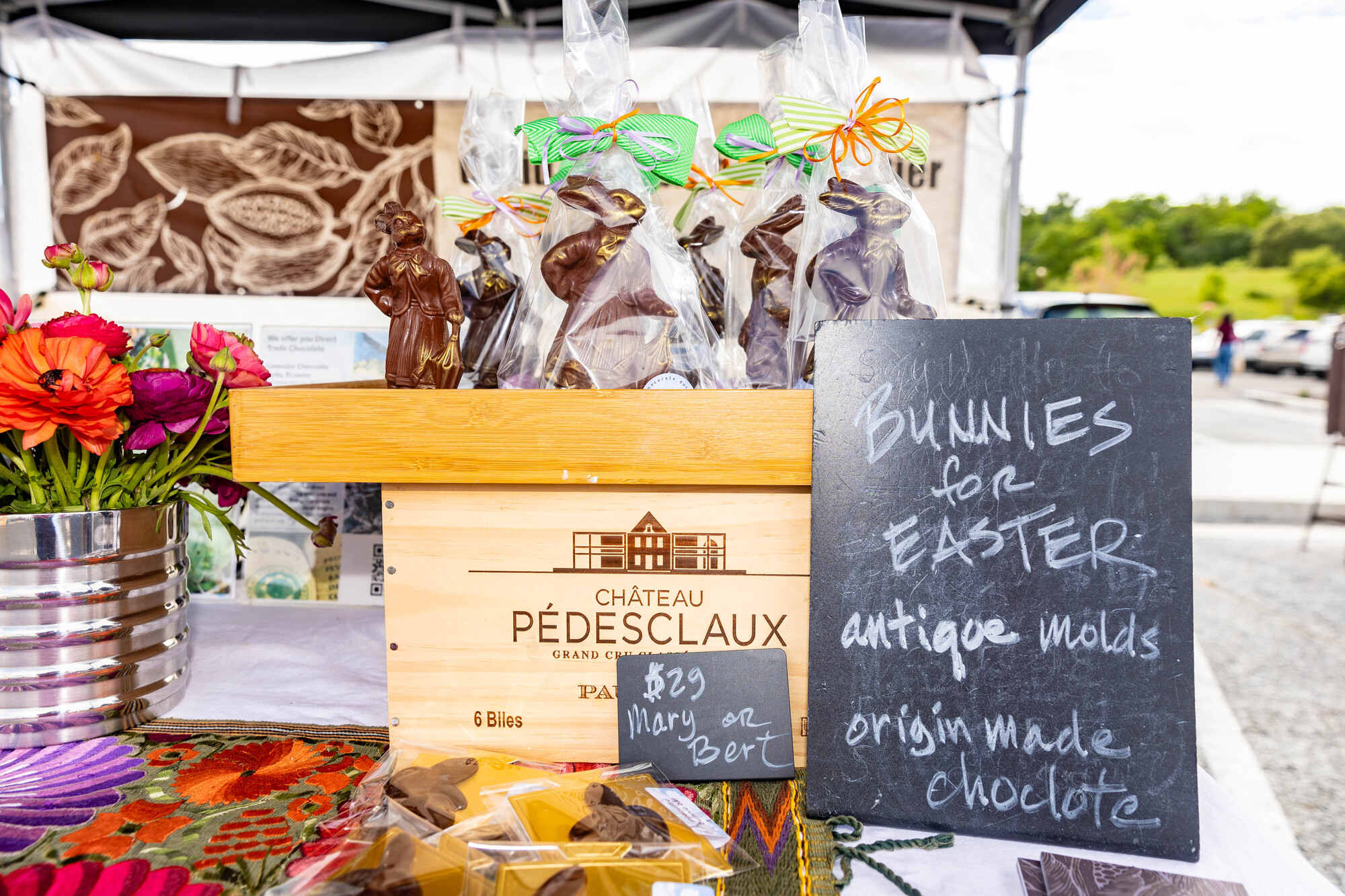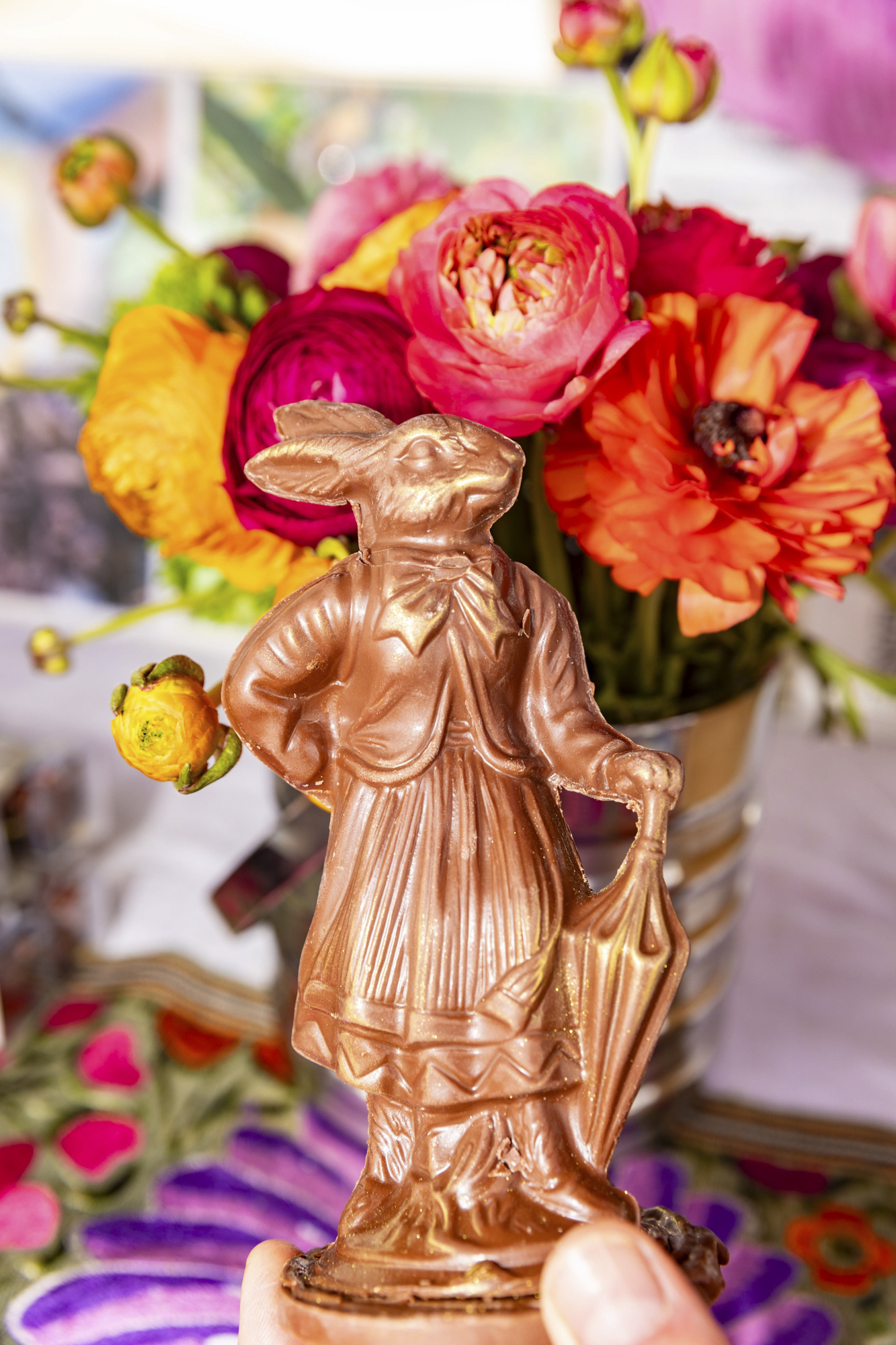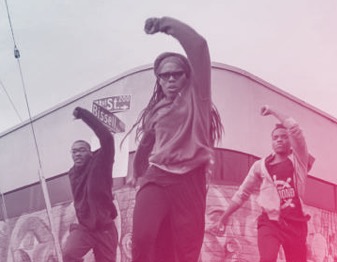Stroll through the Stonestown Farmers Market on a sunny spring morning, and you might spot a stall smothered in chocolate. Behold, an array of bars, bonbons, chocolate caramels, dipped figs and — a particular treat for this time of year — a matching pair of remarkably detailed chocolate bunnies. The male bunny sports a waistcoat and walking stick; the female bunny swishes her skirt and carries a parasol.
“They’re in their Easter Sunday best,” says the maker, David Upchurch.
Upchurch was originally an architect before he fell in love with pastry in Paris and career-changed into chocolate. During the recession, starting in 2009, he trained at City College of San Francisco and San Francisco Baking Institute. For the next five years, he worked at Recchiuti Confections, the craft chocolate tastemaker with a reputation for pulling fresh flavors from the farmers market. Upchurch started his own super-small-batch business during lockdown in 2020. Today, he shares a tiny production kitchen in SoMa while applying for a cottage license to work out of his home in Noe Valley.
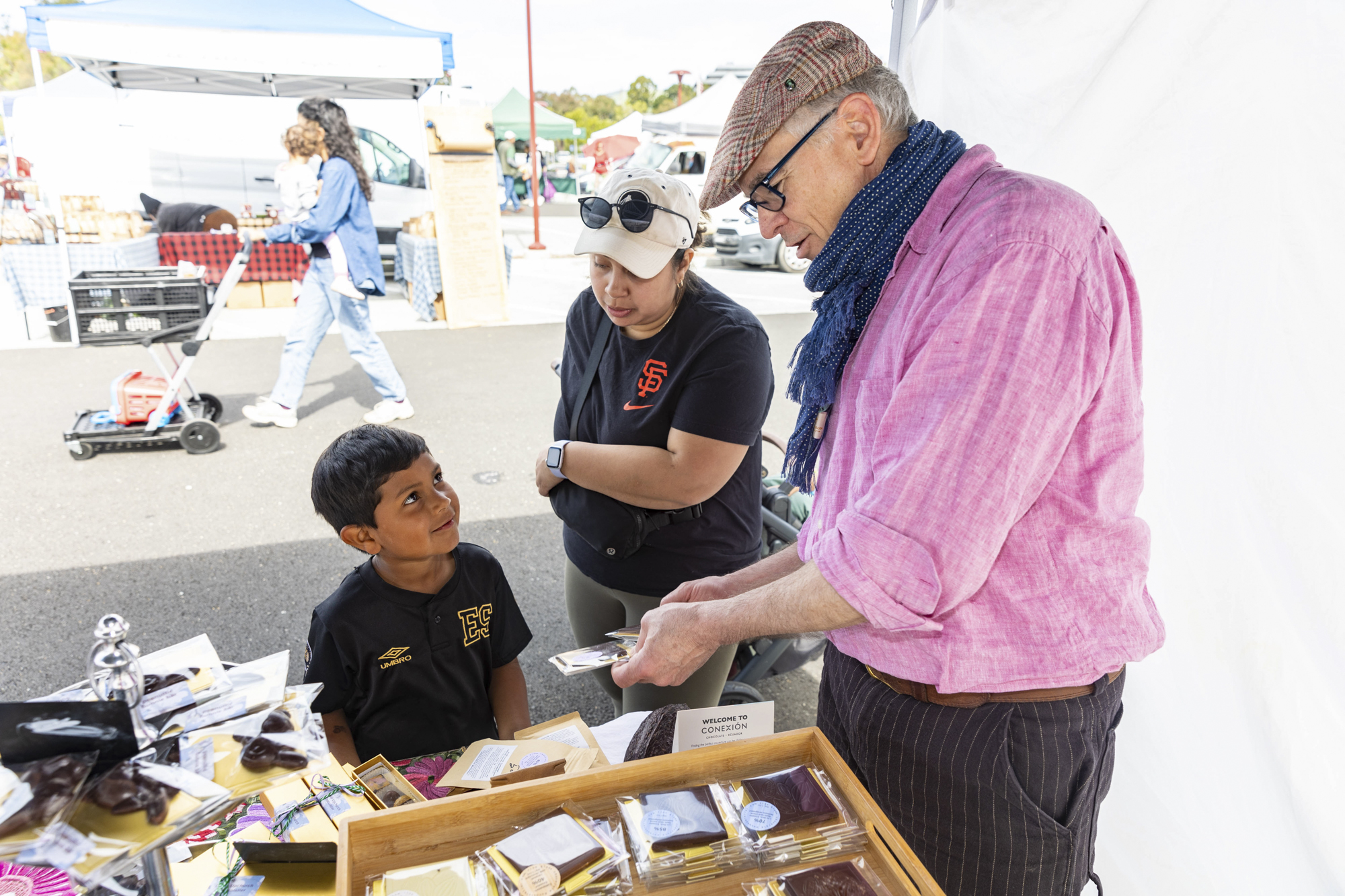
He found the first male bunny while online shopping. As one does, Upchurch was doing a deep dive on eBay, shopping for antique chocolate molds. He scrolled across a dealer based in Brussels, who had a wide selection of molds from the early 20th century. He ordered a dozen, and the one of a male rabbit quickly became a favorite. It was made by Anton Reiche in Dresden, Germany, around 1920, Upchurch believes, according to its catalog number. “He’s extremely dapper,” Upchurch says. Many molds are designed to be perfectly symmetrical, but this rabbit has movement. “For lack of a better reference, he’s posed like a Neoclassical figure.”
He found the exact mate while browsing Omnivore Books. Like any good resident of Noe Valley, Upchurch likes chatting with bookmonger Celia Sack, owner of the only cookbook shop in San Francisco, which also carries vintage menus and assorted antiques. When he spotted the female bunny on her website, he scurried over. “It was total kismet,” Upchurch says. They’re a matching pair, from the exact same maker and time period. If anything, the female bunny was in even better shape. “She aged more gracefully.”
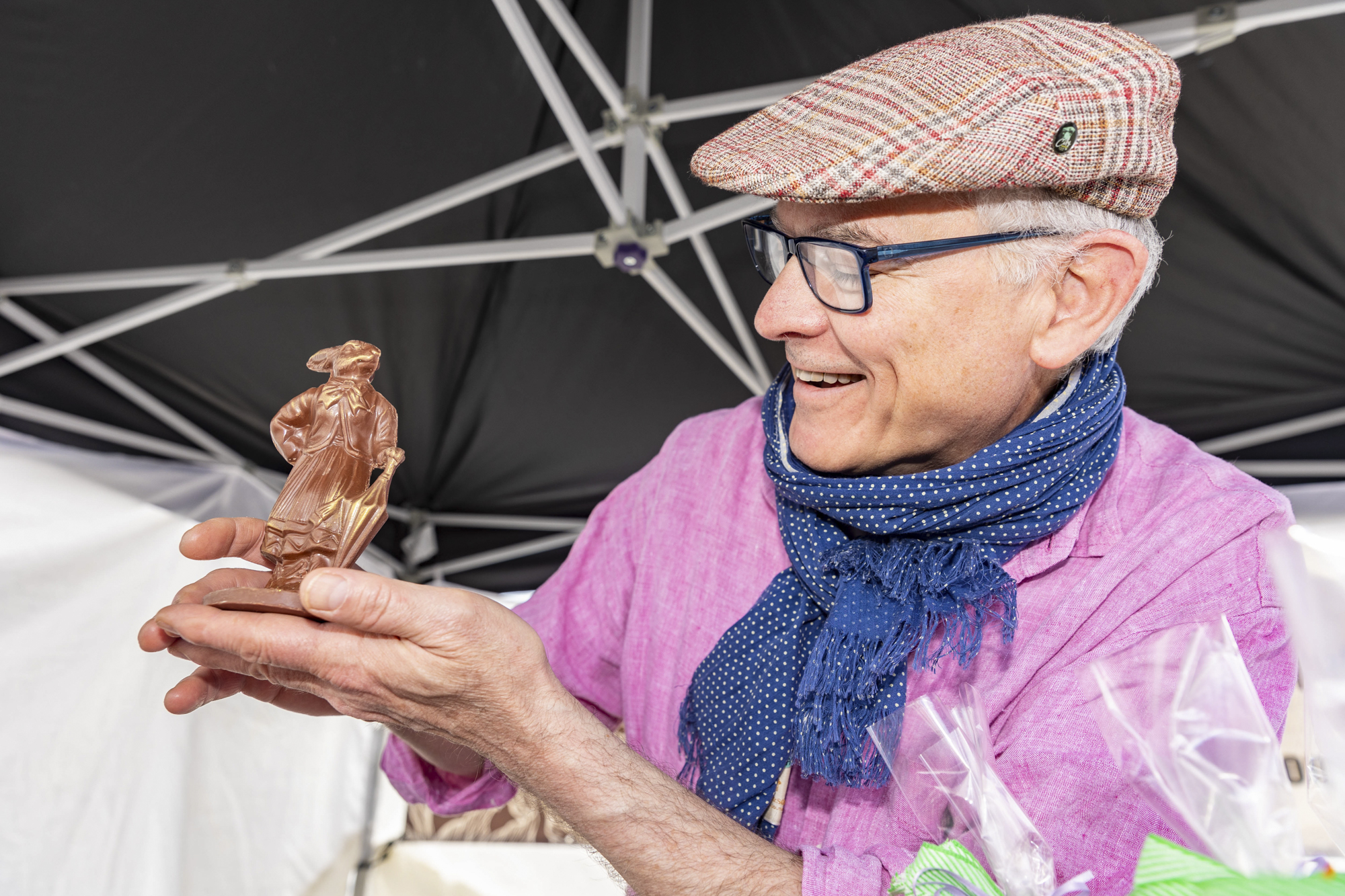
Upchurch affectionately calls his rabbits Bert and Mary, after the chimney sweep and nanny in Mary Poppins. Let’s call it loose inspiration because of course we’re hopping countries and years a smidge: Mary Poppins is set in London in 1910 during the Edwardian era — King Edward ruled from 1901 to 1910, and the era continued until 1914. So technically these molds were made just after, but the bunnies do wear old-fashioned clothes. “The lady bunny reminds me of Mary Poppins with her flowing skirt, parasol and boots,” Upchurch says.

